My Very Educated Mother Just Served Us Nine Pickles.
--Children everywhere, up until very recently
Taking a look at the new ring discovered around Saturn made me realize something. Most of us don't realize how full of crap our Solar System is.
I don't mean planets, or moons, or comets or asteroids, although there are certainly plenty to go around. A brief recap of what happened around Saturn first. Saturn has seven glorious, inner rings that we're familiar with, that make it a magnificent sight for skywatchers everywhere.

If you look closely at this image, you will see a few white dots in the picture. Know what those are? Some of Saturn's Moons. Titan is the biggest, followed by Rhea, and then Iapetus. All told, Saturn has at least 61 Moons, but Iapetus is the most distant large Moon, coming it at 40% the size of our own Moon. All of Saturn's moons are made of highly reflective material, giving them what we call a high albedo. But Iapetus has this weird coloration to it, as captured by Cassini:
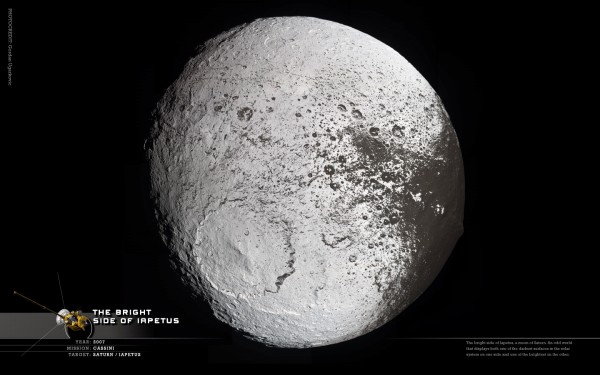
You see, part of it has a similar albedo to the rest of Saturn's moons. But the darker, brownish side of it has a much lower albedo. Why? Material knocked off of a darker moon even farther out, Phoebe, gets into Iapetus' orbital path, and lands on one side of Iapetus only, turning it a dark, dirt-like color.
What does Phoebe look like?
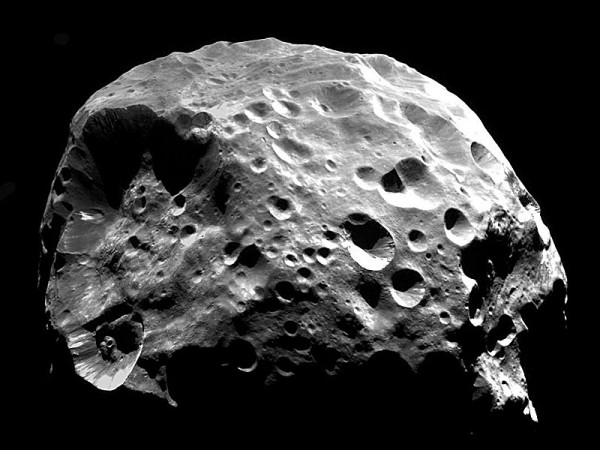
Well, it not only doesn't look like Iapetus, it doesn't look like most moons. In particular, it looks like an asteroid. Compare with this asteroid below.
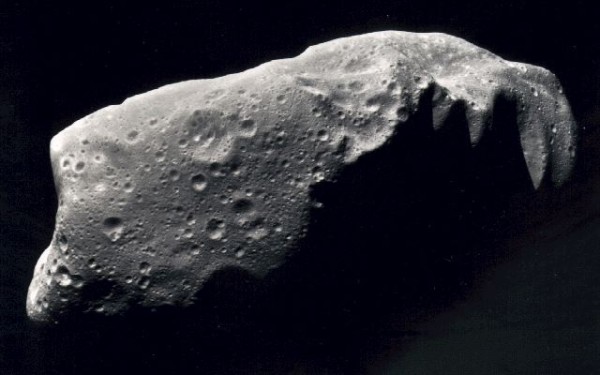
In fact, someone pointed out to me that Phoebe is probably a captured asteroid.
It isn't.
Phoebe has the wrong density, albedo, and composition to be an asteroid. It's a captured piece of junk. You know about asteroids, which live between Mars and Jupiter. You also know about Kuiper Belt objects, which live out past Neptune's orbit. But have you ever heard of Centaurs?
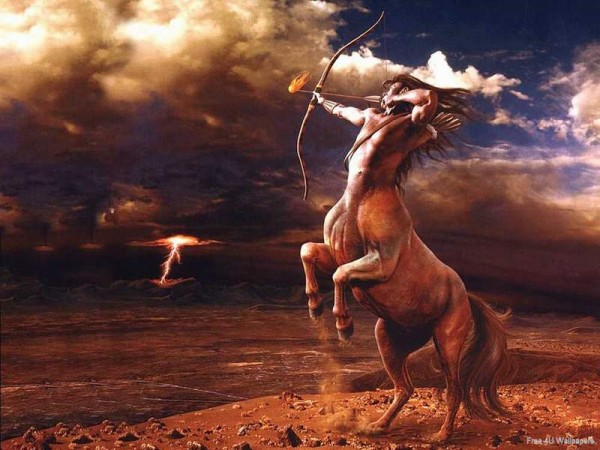
Not that kind! Centaurs were half-man/half-horse creatures. In the Solar System, we have some half-asteroid/half-comet objects that we call Centaurs. These probably originated out past Neptune, but now orbit in between Jupiter and Neptune. (In orange, below.)
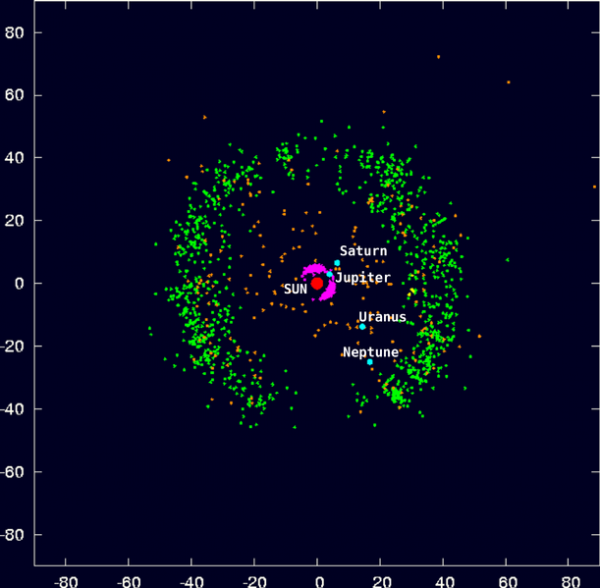
They have orbits more like asteroids, but material compositions similar to comets. In fact, if we let Phoebe get close to the Sun, it would develop a cometary tail!
Why is this interesting? Remember the IAU's definition of a planet:
A "planet" is a celestial body that:
- is in orbit around the Sun,
- has sufficient mass for its self-gravity to overcome rigid body forces so that it assumes a hydrostatic equilibrium (nearly round) shape, and
- has cleared the neighbourhood around its orbit.
Apparently, "clearing your orbit" doesn't mean the same thing as "clearing the table". You don't have to reach a state of "all-clear" to count yourself successful. In fact, there are plenty of them still left.
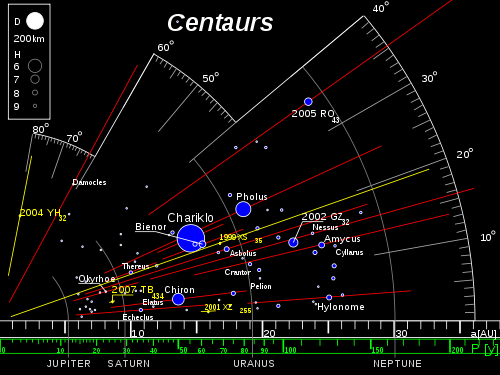
These "centaurs" are not stable, as within a few million years they'll all be either kicked out of orbit, thrown to the inner or outer solar system, or captured by one of the gas giants.
But they'll be replaced by new centaurs coming in from beyond Neptune.
Know what? This isn't the only junk out there. If we look around Jupiter, we find two classes of "asteroid" that are in Jupiter's orbit: Greeks and Trojans. (Never mind the brown "Hildas"!)

The "Greeks" orbit 60 degrees ahead of a planet in its orbit, while the "Trojans" orbit 60 degrees behind it. These are also only temporary, but they sure to add up! Jupiter -- right now -- has thousands! The other gas giants have many, as well. But even the inner solar system gets in on the action; our own dear Earth has one! (It's named Cruithne; have a look below!)
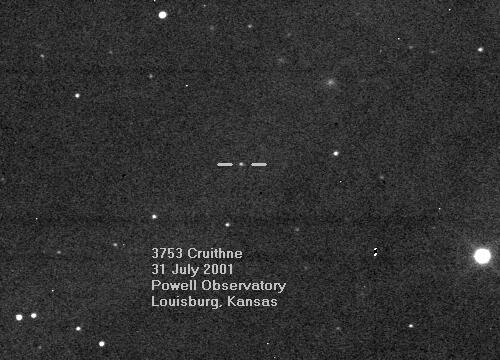
So, there are asteroids and comets, but also a bunch of them that have migrated into other planets' orbits. Some of them become moons (right, Mars?), others accrue Greek and Trojan asteroids (indeed, Jupiter?), and others either get kicked out or melt away. But there's junk everywhere, not just in these neat little belts that we define.
So the next time you're planning a trip through the Solar System, make sure your map is very, very good. If not, one of these rogue rocks could completely ruin your day, just like they (appear to) ruin the IAU's definition of 'planet'!

"Most of us don't realize how full of crap our Solar System is." - and most of it's in Washignton DC!
The planet rules set is missing one:
4. Your name is not Pluto
Rule 3 (which killed Pluto) seems to be pretty arbitrarily applied looking at your graphs.
Now we're discovering main belt comets, the distinction between asteroid and comet/centaur is blurring anyway. I thought trojans aren't that temporary, at least the Jovian ones, with orbital lifetimes similar to the age of the solar system.
Of course, your whole post is bass-ackwards: the solar system is full of interesting stuff, but people insist on paying attention to those crappy planet things instead, because they're the bully boys that throw everything else around.
Ixnay on the utoplay. You'll get the nuts in here (again).
I've been wondering something about the Jovian Lagrange points: Are they stable enough that we could put satellites there (assuming we have a way of braking the things)? I'd've thought they would be good places to put relays for the 'interplanetary communications network'. It seems down right silly that we're still relying on direct line of sight for recovering so precious data.
Funny that you say that, NASA is funding a program to put football field size antennas for relay purposes just there (to communicate with a possible Mars mission independently of planetary position).
"In fact, someone pointed out to me that Phoebe is probably a captured asteroid."
I certainly hope you aren't referring to me when I said "Actually, the story is a tad more complicated than that. Phoebe is probably a captured body and didn't form along with the inner satellites. The retrograde orbit with a huge semimajor axis is a dead giveaway."
I certainly do not see the word asteroid in there anywhere.
UR STILL A FREAK BUT UR HOT!!!!!!! <3<3<3
good......------......very good